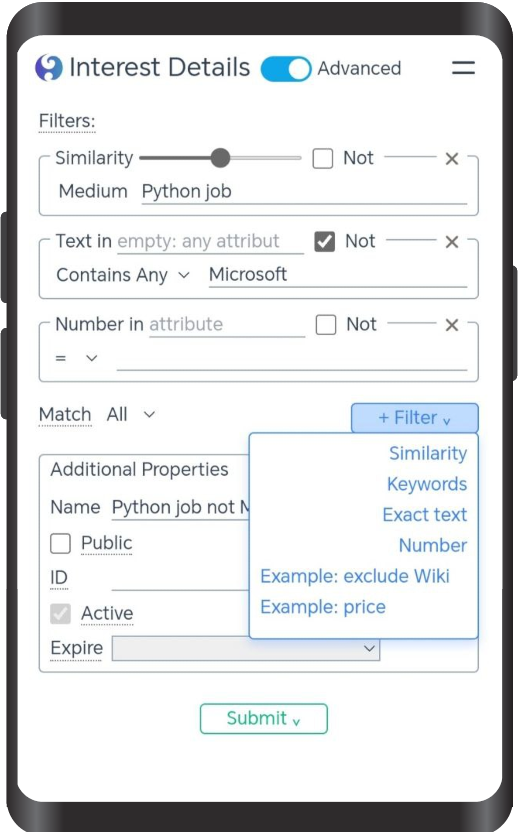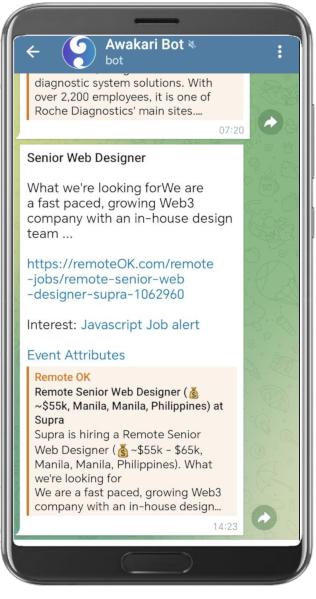Everything in one place:
Define Your Filters

Once: no more repeating a search to get new results. Save your time.
Text: keywords, semantic, exact
Numbers: price, location, ...
Group filters to match All or Any
Best for monitoring and alerting.
... or whatever you are interested in.
In Your Favorite Reader

Instant, nearly real-time delivery.
Choose how to read results:
In any RSS reader
In Telegram
In Fediverse or Bluesky (public interests)
Use message attributes to fine-tune your filter conditions.
Subscribe to any existing public interests. Share your interests to public.
Add own favorite sources to the common collection: RSS/Atom feeds, Telegram channels, Fediverse publishers...
Awakari doesn't collect any user data. No cookies, no tracking.
Status
Popular Sources
Top relevant sources being read recently.
New Public Interests
Public interests created recently.
Published Messages
Count over a recent time period.
1 Min
1 Hour
1 Day
30 Days
Read Messages
Message read count over a recent time period.
1 Min
1 Hour
1 Day
30 Days
Core Latency
End-to-end message processing duration.
50 %
75 %
95 %
99 %
Subscriptions
Push delivery.
Current
1 Hour
1 Day
30 Days
Solutions
Serverless
Public UI
Easy way to manage interests and publishing.
Best for personal use.
